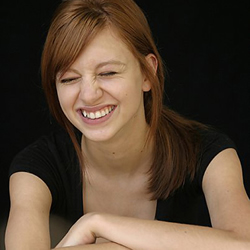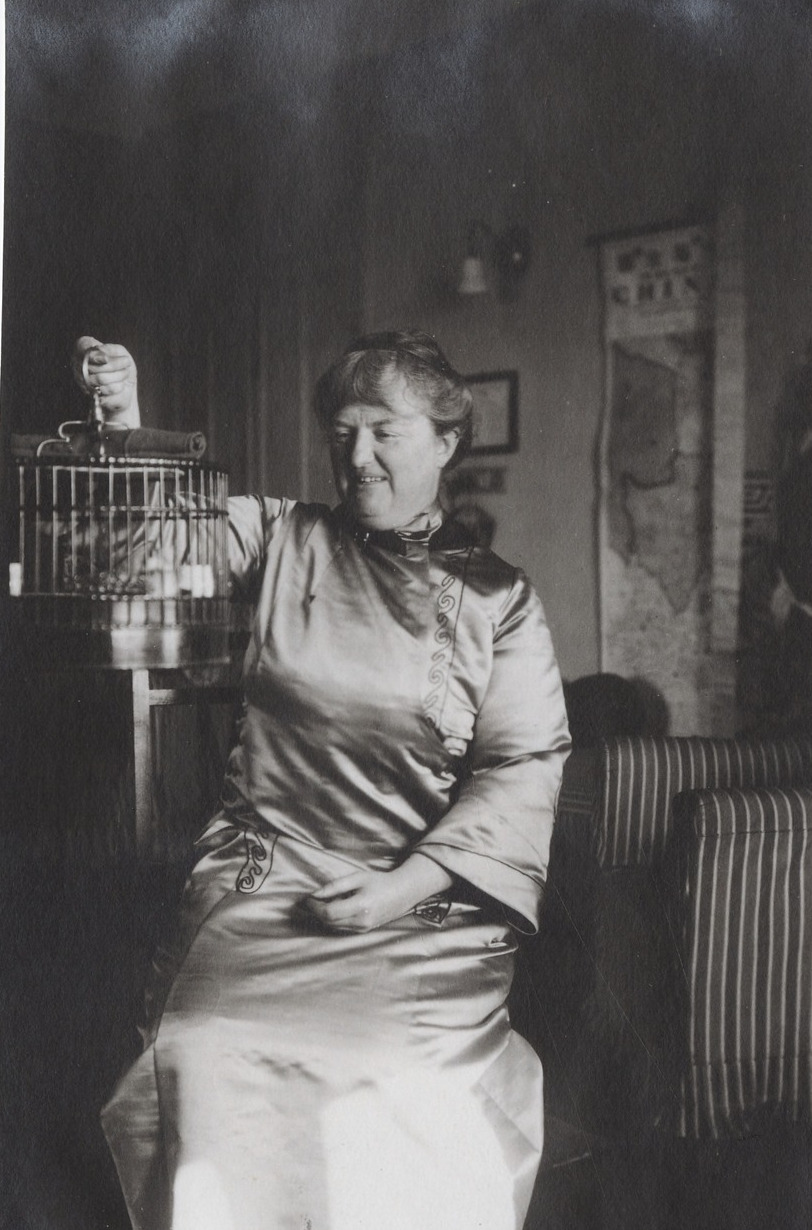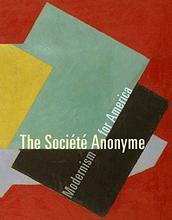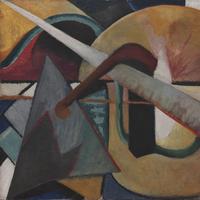More about Katherine Sophie Dreier
- All
- Info
- Shop
Works by Katherine Sophie Dreier

Sr. Editor
Art critic Aline Saarinen once wrote of Katherine Sophie Dreier, "Modern Art has known no other so fervent a propagandist.”
Born and raised in Brooklyn, New York, Dreier was the youngest of five children. The parents, Theodor and Dorothea Dreier (whose maiden name was also Dreier, as the two were cousins) hailed from Germany. Theodor made a killing in the iron and steel business Stateside and the children enjoyed a comfortable upbringing, with an emphasis on education and culture. The Dreier's always made sure their 4 daughters had the same opportunities and agency as their son, and they would all go on to do important things in politics, including involvement in the Suffragette movement, and, of course, the arts. Dreier’s parents also highly valued charitable civic engagement; Mrs. Dreier founded the German Home for the Recreation of Women and Children, where the twenty-one year old Katherine volunteered, sparking a lifelong interest in philanthropic efforts.
When her parents died in the 1890s, leaving her a significant inheritance, Katherine would embark on travels that would entice any twenty-something. She traveled often to Europe in the subsequent years to study art, where, along with the Old Masters, she encountered progressive painting, like in the collection of Leo and Gertrude Stein. The abstraction happening in European modernism was a whole new ballgame for Dreier, and she was inspired by artists who were breaking with pictorial traditions to make art that celebrated freedom of expression. Upon returning to New York, she became connected with a network of like-minded European artists. Two of her paintings were exhibited in the infamous 1913 Armory Show that introduced modern art to America, alongside artists like Pablo Picasso, Constantin Brâncuși, Georges Braque, and Marcel Duchamp. Dreier cites the negative critical response to this show as the inspiration for her lifelong work making, collecting, and championing modern art, which was "largely dismissed and misunderstood by American audiences."
Duchamp and Dreier became close friends, forging a platonic and collaborative relationship that would last the rest of their lives. Together with Man Ray and others, they founded the Society of Independent Artists, the American version of the French Société des artistes indépendants. They ditched the group shortly after, though, when the committee rejected Duchamp's Fountain (1917) for the annual exhibition, as their whole aim was to let anyone who paid the entry fee participate. They went on to found the Société Anonyme, Inc.: Museum of Modern Art 1920, with the goal to collect and champion modern art in the United States and Europe. The name itself is a bit of a Dadaist joke, as Dreier described: "Since our desire was to promote art and not our own personalities, Man Ray conceived the amusing title of calling it the Société Anonyme, which is the French for 'incorporated', and as we incorporated, we became Incorporated Incorporated." The Guggenheim also points out that, "In true playful Dadaist and Surrealist fashion, the term “Société Anonyme” is also the French equivalent of “corporation,” making the group’s name a redundant sendup of industrialized capitalism."
Dreier was instrumental to their cause, not only through financial backing, but by organizing and contributing her own scholarship to lectures, shows, and books. Though the "museum" never had a physical building, they did go on to donate the 800 piece collection to Yale University in 1941, and was the first collection in the USA to be called a "museum of modern art." Dreier greatly resented when the Museum of Modern Art opened in 1929 with the moniker, as the Société Anonyme was never able to find a permanent home. They (and all modern museums) owe Dreier a big one: at their 1926 International Exhibition of Modern Art at the Brooklyn Museum, Dreier made the groundbreaking choice to display the art one at a time, in a horizontal line at eye level, as opposed to the stacking of work traditional to salon shows. It was a choice that did not go unnoticed by young curator Alfred Barr, Founding Director of MoMA, an institution Dreier states had "neither love nor intelligence regarding art."
Unluckily, Dreier developed non-alcohol related cirrhosis of the liver in the late 1940s. The disease would overcome her and she died in 1952, but not before changing the landscape of American art forever.
Sources
- Kort, Carol, Sonnenborn, Liz, A to Z American Women in the Visual Arts. New York: Facts on File, Inc. 2012.
- Kuenzli, Rudolf E., Naumann, Francis M., Marcel Duchamp: Artist of the Century. Massachusetts: MIT Press, 1996.
- Levin, Amy K., Gender, Sexuality and Museums: A Routledge Reader. New York: Routledge, 2010.
- Moffitt, John F., Alchemist of the Avant-Garde: The Case of Marcel Duchamp. Albany: State University of New York Press, 2003.
- "Katherine S. Dreier," Guggenheim Museum. https://www.guggenheim.org/history/katherine-s-dreier
- "Katherine Dreier," The Art Story https://www.theartstory.org/artist/dreier-katherine/life-and-legacy/
Featured Content
Here is what Wikipedia says about Katherine Sophie Dreier
Katherine Sophie Dreier (September 10, 1877 – March 29, 1952) was an American artist, lecturer, patron of the arts, and social reformer. Dreier developed an interest in art at a young age and was afforded the opportunity of studying art in the United States and in Europe due to her parents' wealth and progressive attitudes. Her sister Dorothea, a Post-Impressionist painter traveled and studied with her in Europe. She was most influenced by modern art, particularly by her friend Marcel Duchamp, and due to her frustration with the poor reception that the works received, she became a supporter of other artists. She was co-founder of the Society of Independent Artists and the Société Anonyme, which had the first permanent collection of modern art, representing 175 artists and more than 800 works of art. The collection was donated to Yale University. Her works were exhibited in Europe and the United States, including the 1913 International Exhibition of Modern Art.
Dreier was also an active suffragette, attending the sixth convention of the International Woman Suffrage Alliance in Stockholm, Sweden as a delegate. She was the head of the New York City's German-American Committee of the Woman Suffrage party in 1915 and treasurer of the organization her mother established, German House for Recreation of Women and Children. She co-founded the German House for Recreation of Women and Children, and was its president. Two of her sisters were social reformers, Mary Dreier and Margaret Dreier Robins.
Check out the full Wikipedia article about Katherine Sophie Dreier












